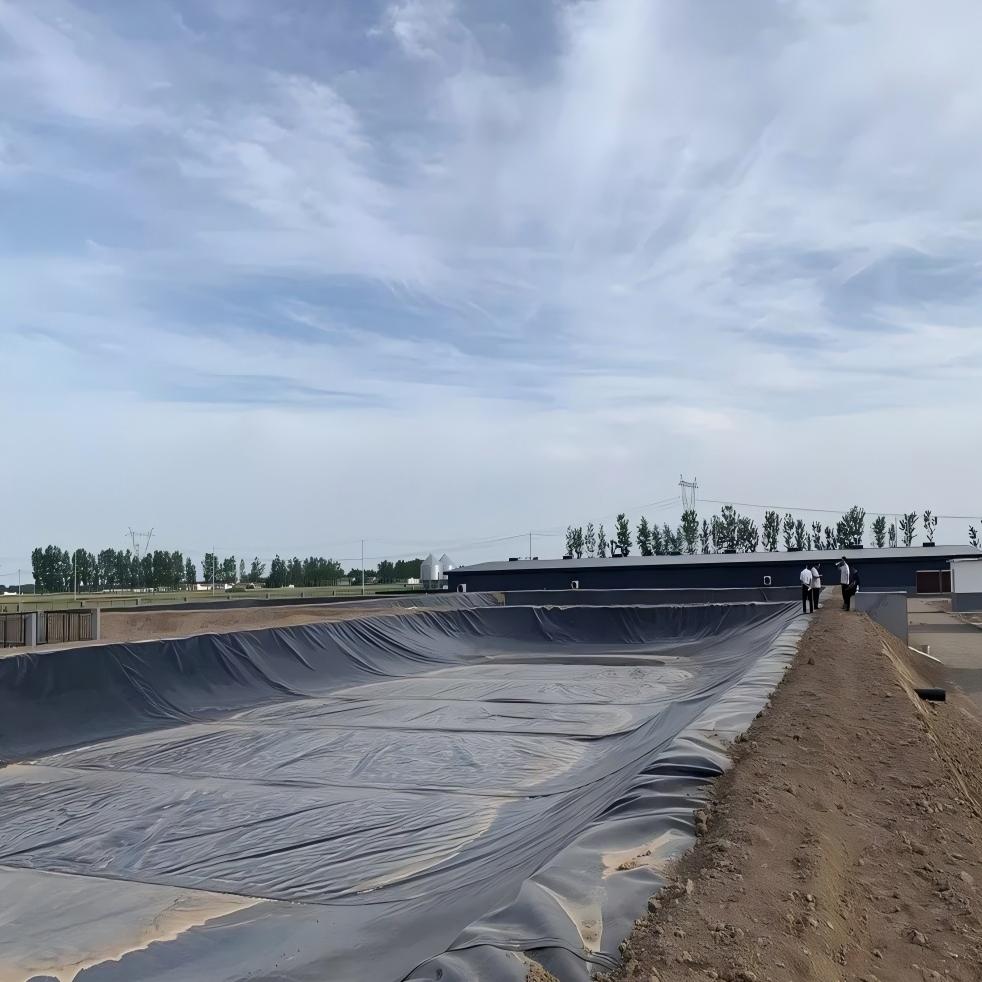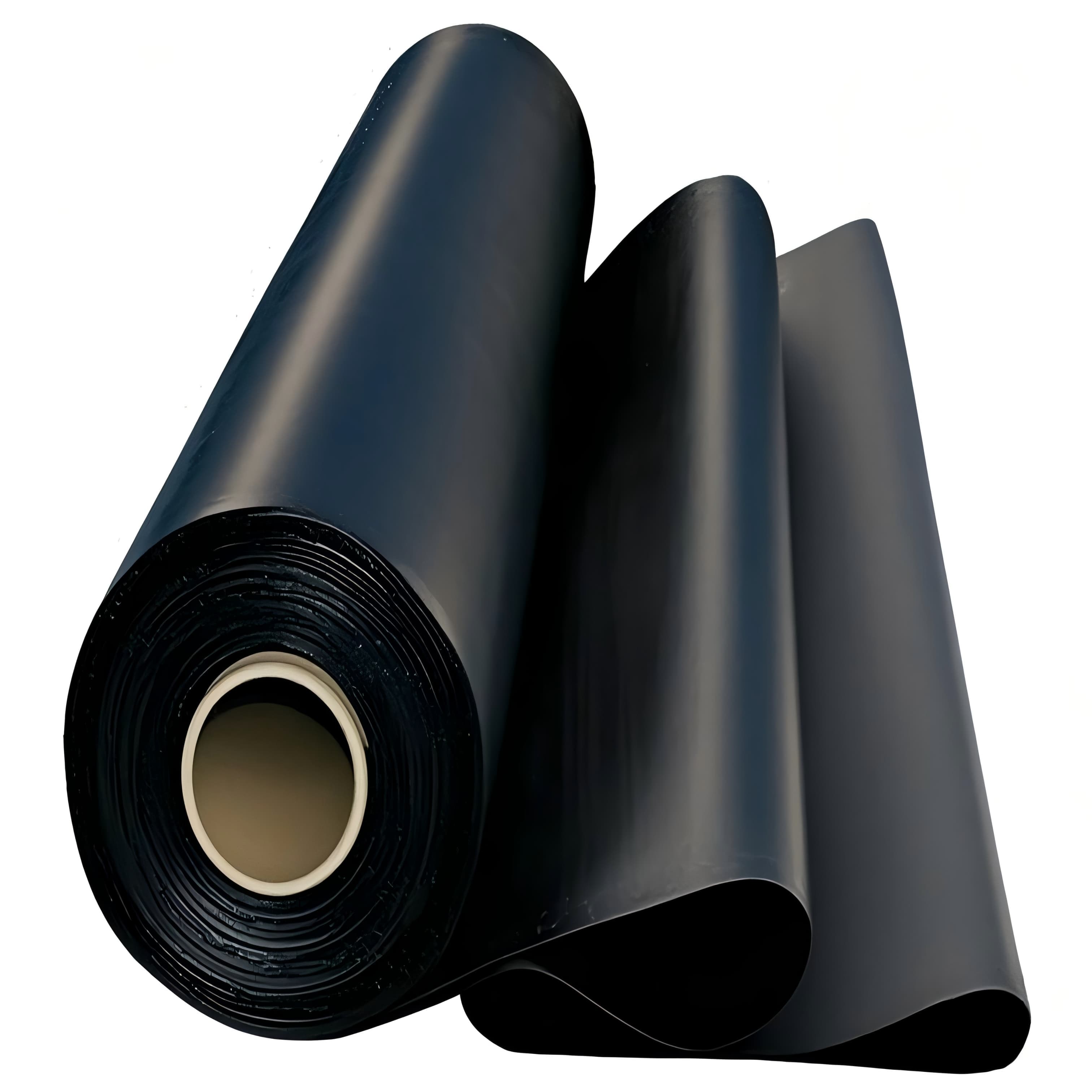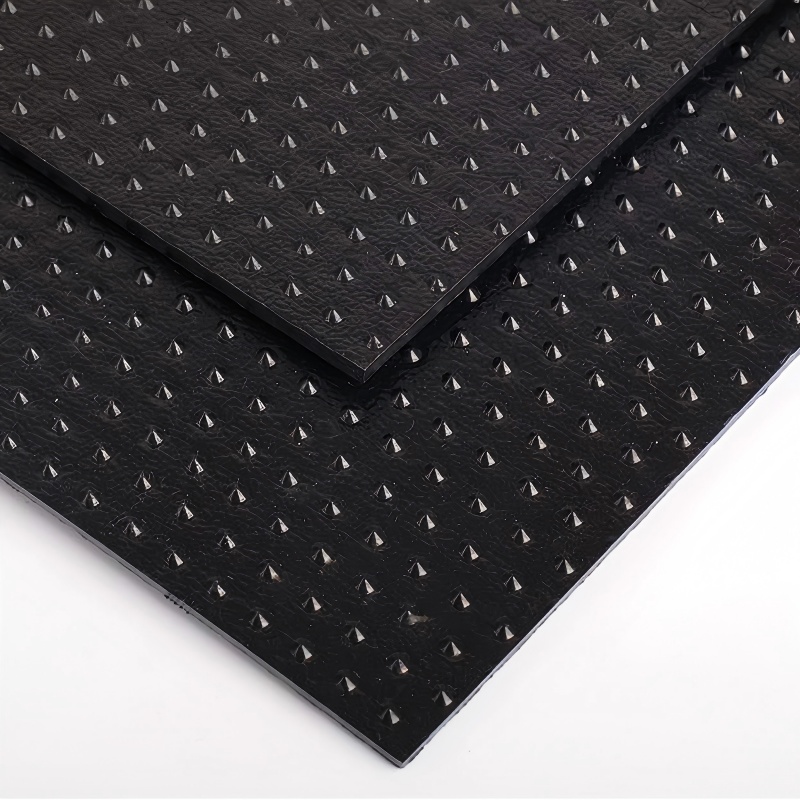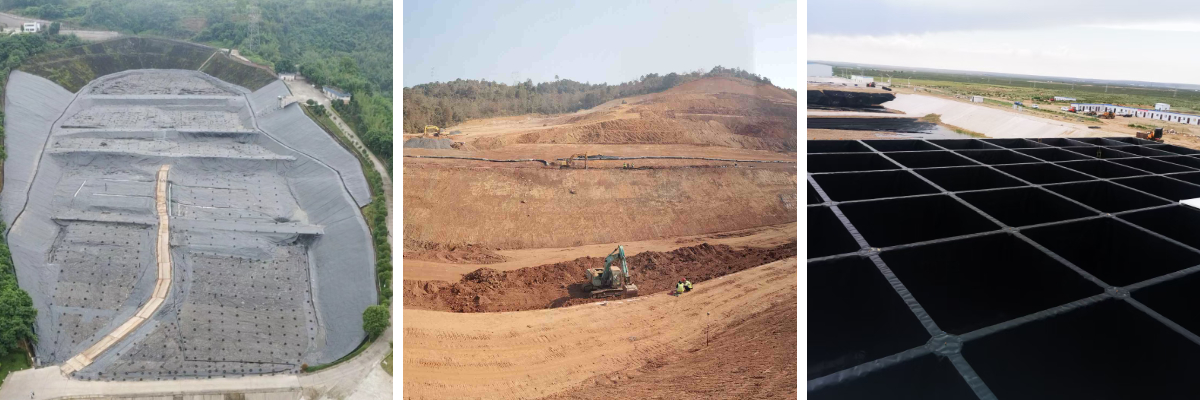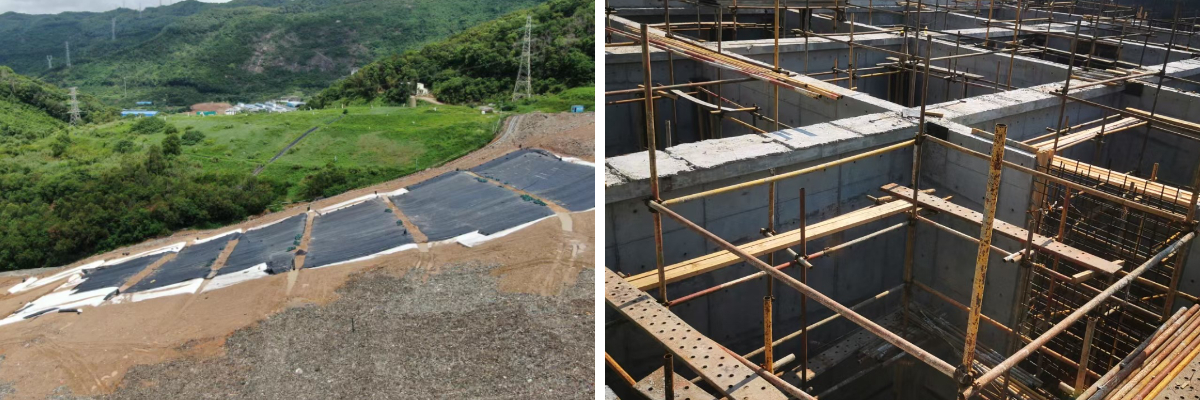Geomembrane Liner
1.High impermeability:
With a low permeability coefficient (10⁻¹²~10⁻¹³ cm/s), it effectively blocks the seepage of water, liquids and gases.
2.Chemical corrosion resistance:
Resistant to acids, alkalis, salts and other media, suitable for corrosive environments.
3.Aging resistance and mechanical properties:
With added anti-UV agents, it has strong weather resistance), and features excellent tensile strength and puncture resistance, adapting to foundation deformation.
Product Introduction:
Geomembrane Liner is a flexible waterproof barrier material primarily made from high-molecular polymers (such as high-density polyethylene (HDPE), low-density polyethylene (LDPE), ethylene-vinyl acetate copolymer (EVA), polyvinyl chloride (PVC), etc.), produced through extrusion or blow molding processes.With its tight molecular structure, it exhibits excellent impermeability, corrosion resistance, and mechanical properties, making it widely applicable in environmental, hydraulic, agricultural, and industrial projects for seepage control and isolation.
Performance Characteristics
1.Anti-seepage Performance: Geomembranes possess an extremely low permeability coefficient, enabling them to effectively prevent the penetration of water, gases, and other liquids, making them ideal anti-seepage materials.
2.Chemical Stability: They exhibit good corrosion resistance to a variety of chemical substances and can be used for a long time in harsh environments such as those containing acids, alkalis, and salts.
3.Mechanical Properties: Geomembranes have a certain degree of strength and elongation, allowing them to withstand a certain amount of tensile force and deformation, and adapt to uneven settlement of the foundation as well as external forces during construction.
4.Aging Resistance: They demonstrate good aging resistance in natural environments, resulting in a relatively long service life.
5.Convenient Construction: Geomembranes are lightweight and flexible, making them easy to transport and lay. They can be connected using various methods such as welding and bonding, leading to high construction efficiency.
Product Parameters:
| Metric | ASTM | unit | Test value | Minimum test frequency | ||||||
| test method | 0.75 mm | 1.00 mm | 1.25 mm | 1.50 mm | 2.00 mm | 2.50mm | 3.00 mm | |||
| Minimum average thickness | D5199 | mm | 0.75 | 1 | 1.25 | 1.5 | 2 | 2.5 | 3 | Per volume |
| Minimum value (any one of 10) | -10% | -10% | -10% | -10% | -10% | -10% | -10% | |||
| minimum density | D 1505/D 792 | g/cm3 | 0.94 | 0.94 | 0.94 | 0.94 | 0.94 | 0.94 | 0.94 | 90,000 kg |
| Minimum average tensile performance (1) | D638 Type IV | |||||||||
| Breakage strength, | N/mm | 20 | 27 | 33 | 40 | 53 | 67 | 80 | 9,000 kg | |
| yield strength | N/mm | 11 | 15 | 18 | 22 | 29 | 37 | 44 | ||
| Strain extension, | % | 700 | 700 | 700 | 700 | 700 | 700 | 700 | ||
| yield extension | % | 12 | 12 | 12 | 12 | 12 | 12 | 12 | ||
| Minimum strength of right-angle tear | D 1004 | N | 93 | 125 | 156 | 187 | 249 | 311 | 374 | 20,000 kg |
| Minimum puncture strength | D4833 | N | 240 | 320 | 400 | 480 | 640 | 800 | 960 | 20,000 kg |
| Constant tensile load stress cracking (2) | D5397 | hour | 300 | 300 | 300 | 300 | 300 | 300 | 300 | Based on GRI GM-10 |
| Carbon black content | D 1603(3) | % | 2.0-3.0 | 2.0-3.0 | 2.0-3.0 | 2.0-3.0 | 2.0-3.0 | 2.0-3.0 | 2.0-3.0 | 9,000 kg |
| Carbon black dispersion | D5596 | Note (4) | Note (4) | Note (4) | Note (4) | Note (4) | Note (4) | Note (4) | 20,000 kg | |
| Oxygen induction time (OIT) (5) | 90,000 kg | |||||||||
| (a) Standard OIT | D3895 | minute | 100 | 100 | 100 | 100 | 100 | 100 | 100 | |
| (b) high-handed OIT | D5885 | minute | 400 | 400 | 400 | 400 | 400 | 400 | 400 | |
| 85℃ Oven aging (minimum average) (5)(6) | Per formula | |||||||||
| (A) Standard OIT is retained after 90 days | D 5721 | % | 55 | 55 | 55 | 55 | 55 | 55 | 55 | |
| (B) High voltage OIT is retained for 90 days | D 3895 D5885 | % | 80 | 80 | 80 | 80 | 80 | 80 | 80 | |
| Ultraviolet resistance (7) | Per formula | |||||||||
| (a) standard OIT | D3895 | Note (8) 50 | ||||||||
| (b) Retention of high pressure OIT after 1600 hours (9) | D5885 | % | ||||||||
Product Applications:
1.Water Conservancy Engineering:
Geomembranes are used for anti-seepage treatment in projects such as reservoirs, dikes and dams, canals, and sluices. They prevent water leakage, thereby enhancing the safety and stability of these engineering structures.
2.Environmental Engineering:
In projects like landfills, sewage treatment plants, and hazardous waste landfills, geomembranes serve as anti-seepage layers. They prevent the leakage of harmful substances into groundwater, thus protecting the environment.
3.Transportation Engineering:
Geomembranes can be applied for subgrade anti-seepage in highways and railways. They prevent rainwater infiltration that could lead to subgrade softening, and improve the service life of roads.
4.Mining Engineering:
In projects such as tailings ponds and heap leaching pads, geomembranes play a role in anti-seepage and isolation. They prevent the leakage of tailings liquid, which could otherwise cause environmental pollution.
5.Agricultural Engineering:
Geomembranes are used for anti-seepage in water ponds, irrigation canals, aquaculture ponds, etc., to improve the utilization rate of water resources.


